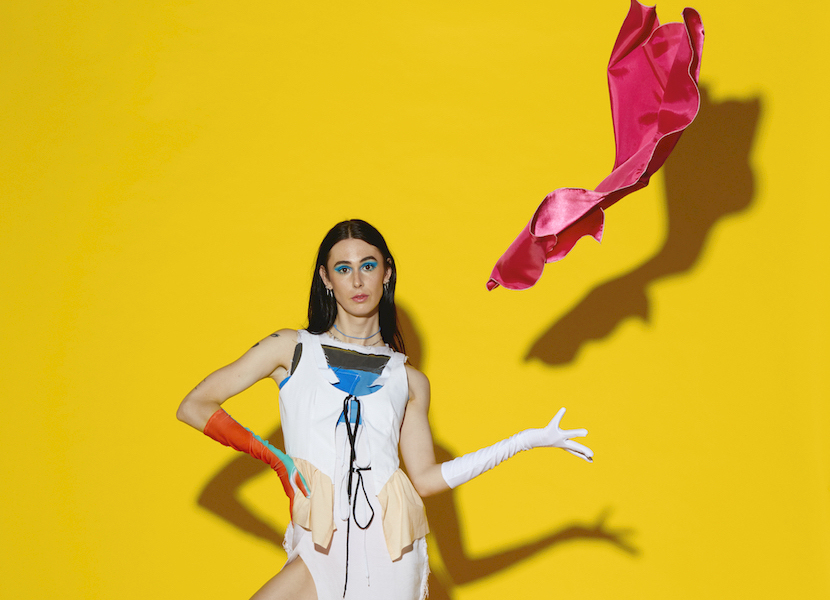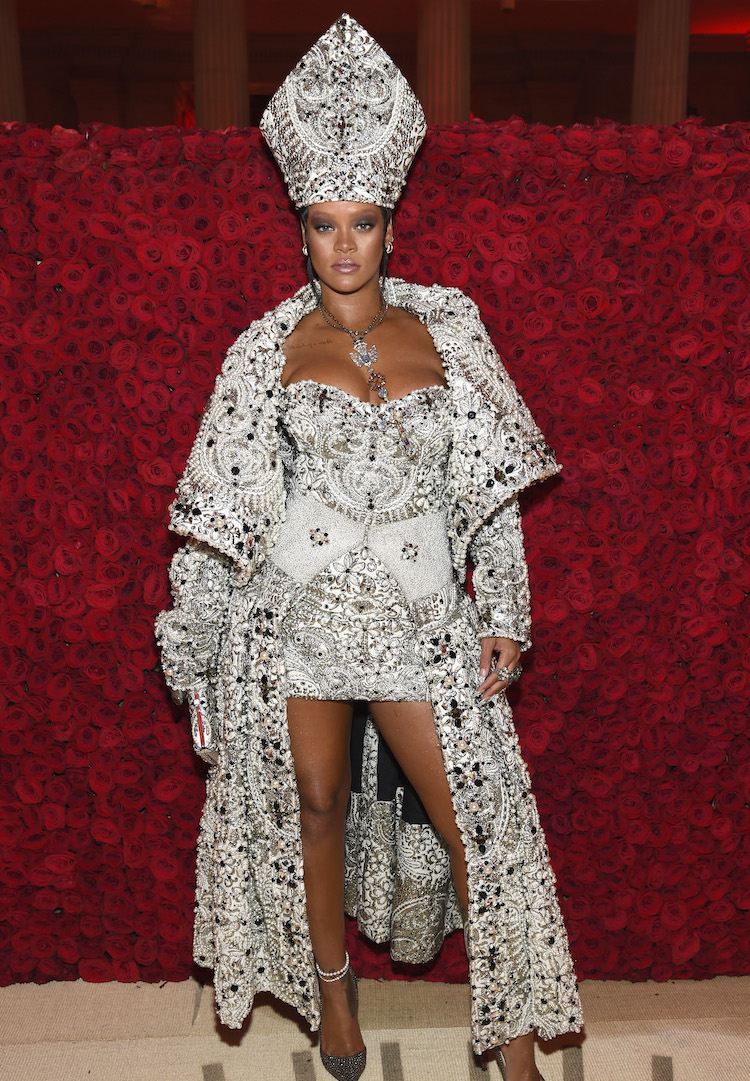Melbourne designer Chelsea Hickman is transforming our textile waste into wearable works of art
PHOTOGRAPHY BY SHELLEY HORAN
WORDS BY ISABELLA WIGHT
It’s cool to care.
Fresh out of my Queensland high school, I arrived on RMIT’s Brunswick campus in a Supre mini skirt and matching crop top, eager to start my fashion degree. In my second lecture, the professor began to talk about the harrowing effects of fast fashion; I began to pull nervously at my itchy polyester collar.
Sustainability was something I hadn’t even considered in my wardrobe. Post-lecture, I concluded that I was going to make some changes, so I promptly went home and threw all of my fast fashion into the dorm room garbage chute. In retrospect, a better choice would have been to make considered purchasing choices, care for my garments and on-sell them to a new home when I no longer wanted to wear them.
For more fashion news, shoots, articles and features, head to our Fashion section.
Unlike me, Chelsea Hickman already knew this. Across campus, Chelsea was completing her Bachelor of Fashion Design, experimenting with the creative practices that have now become her signature. A self-professed fashion rebel, she utilises upcycling, found objects and textile waste to create her own brand of wearable art.
For this year’s Melbourne Fashion Festival, Chelsea created the live exhibition No. 13. Her aim was to bring consumer awareness to the garment industry by creating a physical graph from discarded clothing. Over five days she sorted and separated the pieces, highlighting the sheer volume of clothing going towards landfill every year.
She’s the sustainable fashion guru 18-year-old me desperately needed. In a full-circle moment, I recently chatted with Chelsea about her creative practice, rejecting conformity and what’s next for her following No. 13.
Your exhibition, No. 13, involves you counting, sorting and categorising garments from landfill to gain insight into Australia’s clothing waste problem. What was the process like of putting this together?
The inspiration for No.13 came from a couple of different sources. Last year, I read The Museum of Modern Love by Heather Rose which romanticised Marina Abramovic’s durational performance The Artist is Present [in which] the characters in the book experienced profound moments of realisation and self-discovery… so I thought, ‘Wow cool, I want to do a durational performance too!’
My second major inspiration came from studying the maintenance art of Mierle Laderman Ukeles, whose work often unpacks the stereotypes of women and housework. Many of her performances involved thoroughly cleaning public spaces. I find these abstract artforms extremely interesting – in their crossroads between ‘life’ and ‘art’ as things that are both mundane yet worthy of acute examination, as curious parts of the human condition.
No.13 was predominantly a research project, but counting, sorting and categorising waste has a chaotic aesthetic in a gallery space. It was an observable process of important work and a reference to prominent and pivotal female-led performances in contemporary art.
View this post on Instagram
You grew up in the deep south of Tasmania, with your primary insight into the fashion world coming from the magazines at your local newsagent. Were you a creative kid?
I was very creative. I didn’t much enjoy school when I was a kid because all I wanted to do was make stuff, create sculptures, decorate things, paint and draw. I had trouble concentrating and everything seemed boring and pointless apart from art class. At home, I would turn everything I could into an artwork or a project.
You’ve described your vision as ‘feral, art fashion’, a running theme in your art that you’ve become quite well known for. Has this always been well-received, or has it been difficult to reject the idea of conformity?
I sometimes get stuck on the path between ‘making money’ and being true to my vision and ethics as a designer. Items like T-shirts and tote bags sell quite easily, but they’re very boring to make and I don’t want them to just end up in landfill like every piece of clothing eventually does. I choose to make fewer items and be more experimental in my practice, but this often comes with the strain of being less commercially saleable and is more financially demanding on me trying to survive as a freelancer. Some people don’t ‘get it’ but no matter what you make as a designer, you will never be wholly understood and valued by everyone.
I love your label Fashion Chelsea and your experimental, punk-inspired, handmade aesthetic. How would you describe your design philosophy?
My main philosophies are to normalise sustainability-focused design, educate consumers about textile waste and inspire people about the possibilities of fashion as art. My main priority is to prevent usable textiles from being wasted. Two-thirds of all fabric produced globally is polyester, which is a fibre that does not biodegrade. It’s a plastic-based material; not a lot of people realise that when they buy new clothes. Even if a fabric is biodegradable, landfill stations do not provide ideal environments for the safe and sustainable degradation of textile products.
Upcycling is one of the ways we can prevent textile waste from going to landfill, and extend the life cycle of fast fashion items. Plus, the process of upcycling also gives me the opportunity to continually cannibalise my previous work, so nothing is left stagnant and unused. I don’t think upcycling is the answer to all of our fashion sustainability problems, but it is a stepping stone to prolong garment life and a solution to diverting textile waste from landfill.
With almost 501,000,000kg of textile waste going to landfill every year in Australia, No. 13 is a kind of call to action for fashion consumers. How can we start acting sustainably now, in our own wardrobes?
Producing No.13 was an eye-opening experience for me in learning more about the role of op shops in waste reduction. If something is damaged, stained, smelly, torn, has a missing button or broken zip, it cannot be donated to an op shop. Op shop staff have to sort through everyone’s donations and things that are not saleable have to go to landfill or are turned into rags. Donations that are left outside op shops when the stores are not open have to go to landfill because they become a biohazard.
It’s best to call your local op shops and check to see if they even have the space to accept your donation before you make the trip. It costs op shops millions of dollars every year to dispose of unsaleable donations, so be considerate and make sure your items are clean and in good condition before you donate them. Stores like Goodbyes and Mutual Muse are also a way that you can give your clothes a second life.
What’s next for you and Fashion Chelsea?
After winning the Woods Street Youth Art Prize last year, I am experimenting with creating more patchwork tapestries as a way to utilise fabric scraps to create large and vibrant wall hangings. I’m also working on opening my own online store. I’ve taken so long to make this move because I don’t want my garments and my brand to be part of the problem. I wanted to properly research how to run a store that is as low-impact on the environment as possible. I am also hoping to produce a solo performance for Melbourne Fringe Festival about deadstock garments and fabric.
Check out Chelsea’s work here.













